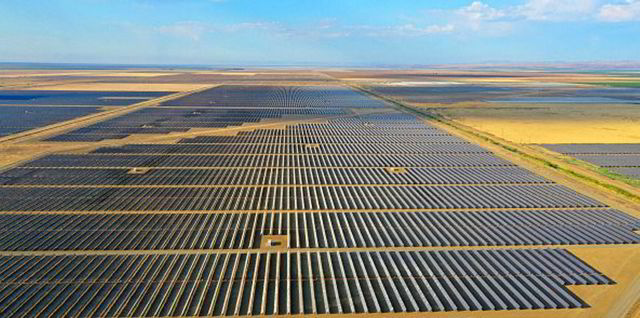
Utility solar will account almost half of 85GW of planned power generating capacity the US is expected to install this year and in 2023 with 60% paired with battery storage, as new wind development slows in the discontinuation of federal subsidy support, according to new figures from the Energy Information Administration (EIA).
“Large additions of utility-scale solar capacity are likely to continue because of falling solar technology costs and the extension of the solar ITC [investment tax credit], which extended the credit to 26% in 2021 and 2022, 22% in 2023, and 10% in 2024 and after,” said the EIA in its latest market analysis.
In contrast, the production tax credit (PTC), the main federal subsidy for onshore wind, expired at the end of 2021. Depending on start of construction date from 2016-21, a project can qualify for 40% to 100% PTC value if it meets commercial year-end operation deadlines from 2022 to 2025.
Historically, the PTC, enacted in 1992, has been periodically renewed with bipartisan support in Congress, often for 1-2 years. Democrats, who hold slim majorities in both chambers, sought a long-term extension as part of the sweeping Build Back Better climate and social policy bill that is stalled in the Senate.
Wind industry leaders do not believe the $1.8trn package will win approval as presently written but are cautiously optimistic that the proposed PTC extension and new tax credits for storage, electric transmission, and other perceived clean energy priorities will be passed later this year as part of a smaller bill.
Based on its own data, EIA said power plant developers and operators expect to add 41GW of utility solar and 10GW of battery storage capacity through the end of next year with more than half to be installed in California, New York, and Texas.
The largest share of both technologies, 12 GW (23%), will be in Texas which does not have mandates or subsidise renewables. Next will be California 11 GW (21%) and New York 4 GW (7%) that do provide incentives and other economic and political support.
In 2022, the US is on track to add 22GW of solar capacity to the grid, significantly more than the 13GW added last year, and 19GW in 2023, according to EIA. The expected 10GW of new battery storage capacity over the next 22 months is more than three times the 3.1GW added in 2021.
“Declining costs for battery storage applications, along with favorable economics when deployed with renewable energy (predominantly wind and solar PV), have driven the expansion of battery storage,” said the EIA.
The remaining 34GW of planned generating capacity additions over the next two years will largely come from natural gas (16 GW) and wind (15 GW). The amount of planned wind capacity dropped by nearly half from the previous two years, which had 29 GW of new wind capacity come online, according to the agency.